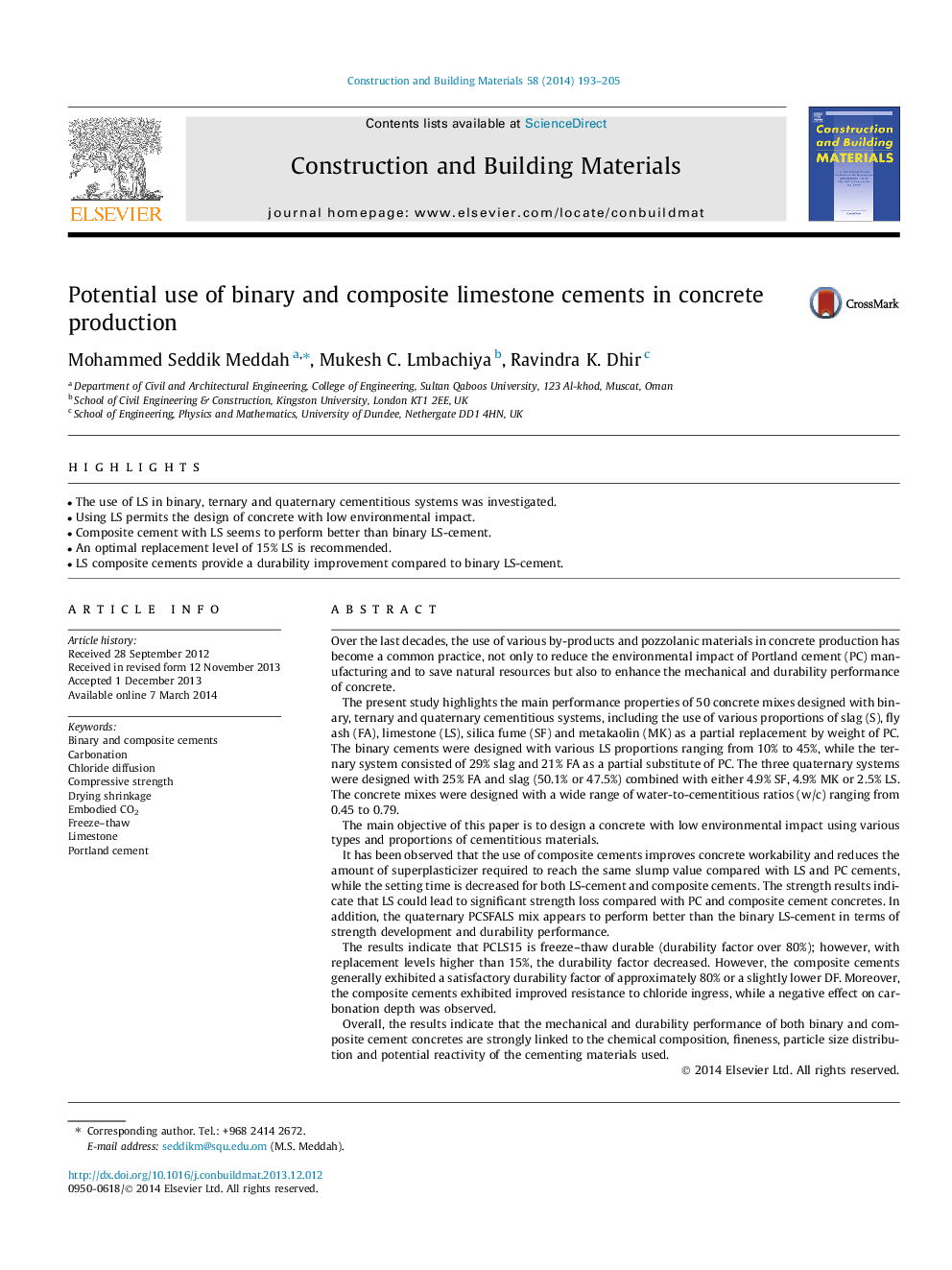| کد مقاله | کد نشریه | سال انتشار | مقاله انگلیسی | نسخه تمام متن |
|---|---|---|---|---|
| 257692 | 503598 | 2014 | 13 صفحه PDF | دانلود رایگان |
• The use of LS in binary, ternary and quaternary cementitious systems was investigated.
• Using LS permits the design of concrete with low environmental impact.
• Composite cement with LS seems to perform better than binary LS-cement.
• An optimal replacement level of 15% LS is recommended.
• LS composite cements provide a durability improvement compared to binary LS-cement.
Over the last decades, the use of various by-products and pozzolanic materials in concrete production has become a common practice, not only to reduce the environmental impact of Portland cement (PC) manufacturing and to save natural resources but also to enhance the mechanical and durability performance of concrete.The present study highlights the main performance properties of 50 concrete mixes designed with binary, ternary and quaternary cementitious systems, including the use of various proportions of slag (S), fly ash (FA), limestone (LS), silica fume (SF) and metakaolin (MK) as a partial replacement by weight of PC. The binary cements were designed with various LS proportions ranging from 10% to 45%, while the ternary system consisted of 29% slag and 21% FA as a partial substitute of PC. The three quaternary systems were designed with 25% FA and slag (50.1% or 47.5%) combined with either 4.9% SF, 4.9% MK or 2.5% LS. The concrete mixes were designed with a wide range of water-to-cementitious ratios (w/c) ranging from 0.45 to 0.79.The main objective of this paper is to design a concrete with low environmental impact using various types and proportions of cementitious materials.It has been observed that the use of composite cements improves concrete workability and reduces the amount of superplasticizer required to reach the same slump value compared with LS and PC cements, while the setting time is decreased for both LS-cement and composite cements. The strength results indicate that LS could lead to significant strength loss compared with PC and composite cement concretes. In addition, the quaternary PCSFALS mix appears to perform better than the binary LS-cement in terms of strength development and durability performance.The results indicate that PCLS15 is freeze–thaw durable (durability factor over 80%); however, with replacement levels higher than 15%, the durability factor decreased. However, the composite cements generally exhibited a satisfactory durability factor of approximately 80% or a slightly lower DF. Moreover, the composite cements exhibited improved resistance to chloride ingress, while a negative effect on carbonation depth was observed.Overall, the results indicate that the mechanical and durability performance of both binary and composite cement concretes are strongly linked to the chemical composition, fineness, particle size distribution and potential reactivity of the cementing materials used.
Journal: Construction and Building Materials - Volume 58, 15 May 2014, Pages 193–205
